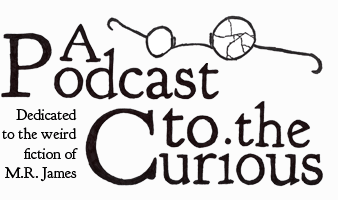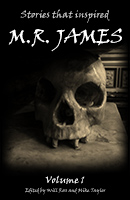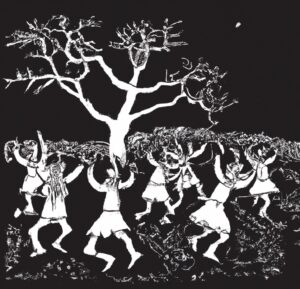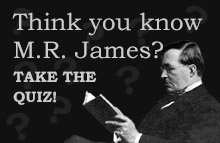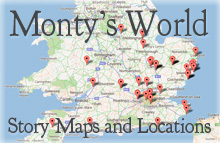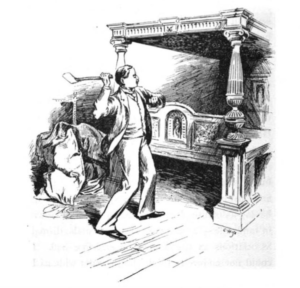 Who would win in a fight between a man and a bed? Find the answer to this question and more in our new episode on The Weird of the Walfords by Louisa Baldwin! Also, if you like emotionally-repressed Victorian husbands, you will not leave disappointed.
Who would win in a fight between a man and a bed? Find the answer to this question and more in our new episode on The Weird of the Walfords by Louisa Baldwin! Also, if you like emotionally-repressed Victorian husbands, you will not leave disappointed.
Show notes:
Podcast: Play in new window | Download
Subscribe:
This episode Mike and Will explore freaky folk-dance, village-based villainy and Cotswold chicanery in Eleanor Scott’s awesome Jamesian folk-horror tale Randalls Round!
Big thanks to Kirsty Woodfield for providing the readings for this episode.
Show notes:
-
This article contains some biographical information as well as plot summaries of the stories that appears in Randalls Round, her only collection of ghost stories. You can also see a
photo of her here.
-
Helen Leys started using the Eleanor Scott pseudonym when she published this controversial novel that exposed the dire experiences of teachers and girls within the English high school system.
-
Eleanor Scott was a student at this ladies college in the days before women were allowed to take degrees. The Somerville website contains some charming photos that give you a sense of what life was like for students at the time.
-
At the start of Randalls Round, Heyling and Mortlake discuss the folk dance revival that was then in full swing. This article describes that revival. Note the reference to the Headington Morris dancers who get a special mention in this story!
-
This 1921 book popularise Murray’s
witch-cult hypothesis, the idea that the people persecuted as ‘witches’ in Europe may in fact have been involved in a survival of a pre-Christian pagan religion. Although her ideas were widely dismissed by historians, the ideas of ‘hidden’ folk/religious practices enduring in England, hidden away from the eyes of religious authorities, captured the public imagination and sparked the sort of debate that Heyling and Mortlake are having at the start of this story.
-
Aaron Worth suggests that the ‘volume of a very famous book on folk-lore’ that Heyling reads in this story would be The Golden Bough, Frazer’s influential multi-volume study on comparative religion, first published in 1890.
- Morris Dance as Ritual Dance, or, English Folk Dance and the Doctrine of Survivals (open.ac.uk)
This article by Chloe Middleton-Metcalfe explores the origins of the idea that folk dance originates in a survival of pre-Christian belief.
-
In this episode Mike mentions the Broad, a Cotswold folk custom that bears some similarity to the activities that Heyling witnesses on the village green.
-
We found it hard to discuss Randalls Round without repeatedly returning to this iconic 1973 British horror film!
-
The village of Randwick in Gloucestershire is at the top of Will’s list of possible real-world locations that may have inspired the fictional village of Randalls. As well as having a similar name and large mound to the north west, it even has its own curious folk celebration known as the
Randwick Wap!
-
This Instagram account celebrates the weirdest (or should that be wyrdest?) elements of folk customs and traditions. This group of Morris men parading a
strange, monstrous effigy seems particularly reminiscent of the events of Randalls Round!

Podcast: Play in new window | Download
Subscribe:
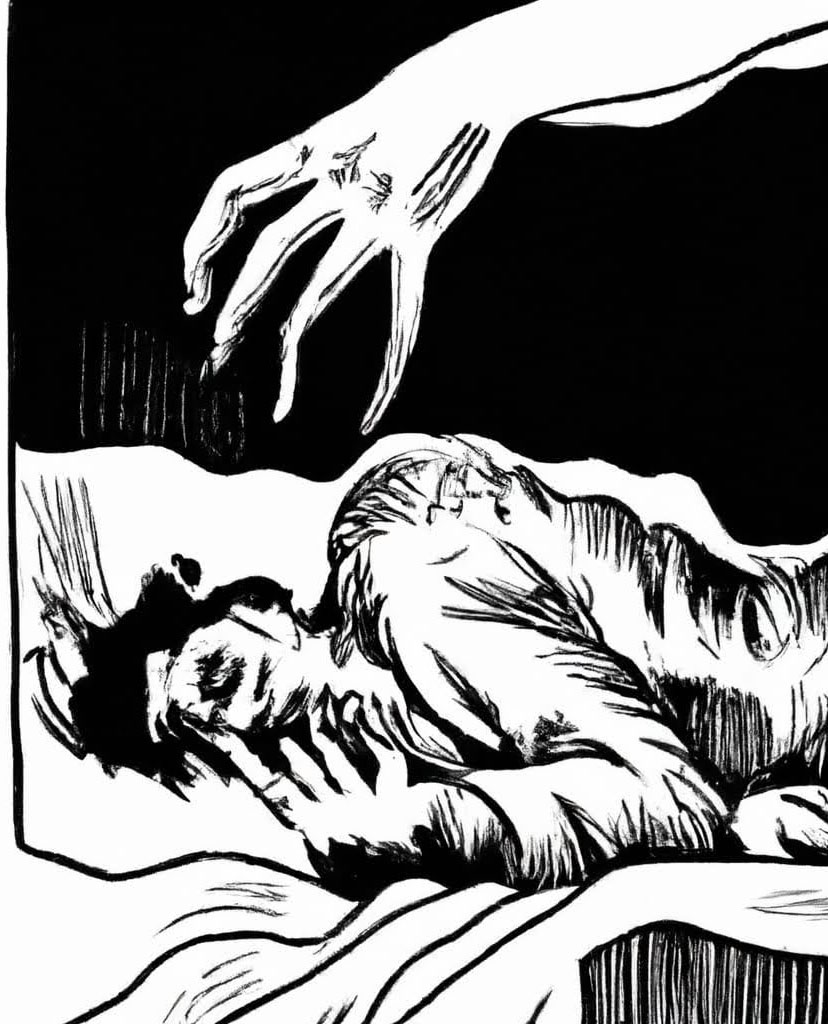 In the first episode of Season 4 tm, Mike and Will are delighted by Let Loose by Mary Cholmondeley, a tale of crypts, clergymen and crikey, what is that in the dog’s mouth?
In the first episode of Season 4 tm, Mike and Will are delighted by Let Loose by Mary Cholmondeley, a tale of crypts, clergymen and crikey, what is that in the dog’s mouth?
Big thanks to Jim Moon for allowing us to use extracts from his excellent reading of the story. You can listen to the whole thing over on the Hypnogoria podcast feed.
Show notes:
- Mary Cholmondeley (Victorian Fiction Research Guides)
You can learn more about Mary’s life and work in this article, or for a briefer summary, try wikipedia.
- Temple Bar Magazine (Wikipedia)
This story first appeared in the April 1890 edition of Temple Bar magazine, a literary periodical that ran for nearly fifty years.
- ‘The Dead’ by Mathilde Blind (Poetry Nook)
The two lines quoted at the start of this story come from this poem by 19th century British author and poet Mathilde Blind.
- The Dark Triad (Wikipedia)
During this episode Mike describes the character of Blake as possessing at least two of the personality traits that make up the Dark Triad, a psychological theory of personality first described by Delroy L. Paulhus and Kevin M. Williams in 2002.
- History of Charnel Chapels (Rothwell Charnel Chapel Project)
In this story we discuss the crypt at Wet-Waste-on-the-Wold church as being more of a charnel house.
- Bartleby the Scrivener (Wikipedia)
Blake’s repeated use of the phrase “I’d prefer not to…” put us in mind of Herman Melville’s famously work-shy clerk Bartleby!
- Asaph (wikipedia)
In this story, the vicar is locked in an ongoing arguement with a neighbouring clergyman about the meaning of the word ‘Asaph’. Dry stuff, but if you are interested there is a summary of the different opinions on this matter on Wikipedia.
- Fists of fear: severed hands in films – ranked! (theguardian.com)
Here’s a fun listicle of movies where, like in Let Loose, a severed hand returns to cause havoc. A special mention should go to the our personal favourite, the ‘hand’ scene from Evil Dead 2!
- Gelert the Faithful Hound (NationalTrust.org.uk)
Here’s another famous example from legend of a faithful dog who was killed by his master after a tragic misunderstanding. #RIPBrian
- Women’s Weird: Strange Stories by Women, 1890-1940 (Handheld Press)
We quoted a line from Melissa Edmundson’s introduction to this anthology, ‘[Let Loose] predates James’s stories if haunted churches and crypts, so that it could be legitimately said that James’s stories were in the style of Mary Cholmondeley’.

Podcast: Play in new window | Download
Subscribe:
 Who would win in a fight between a man and a bed? Find the answer to this question and more in our new episode on The Weird of the Walfords by Louisa Baldwin! Also, if you like emotionally-repressed Victorian husbands, you will not leave disappointed.
Who would win in a fight between a man and a bed? Find the answer to this question and more in our new episode on The Weird of the Walfords by Louisa Baldwin! Also, if you like emotionally-repressed Victorian husbands, you will not leave disappointed.